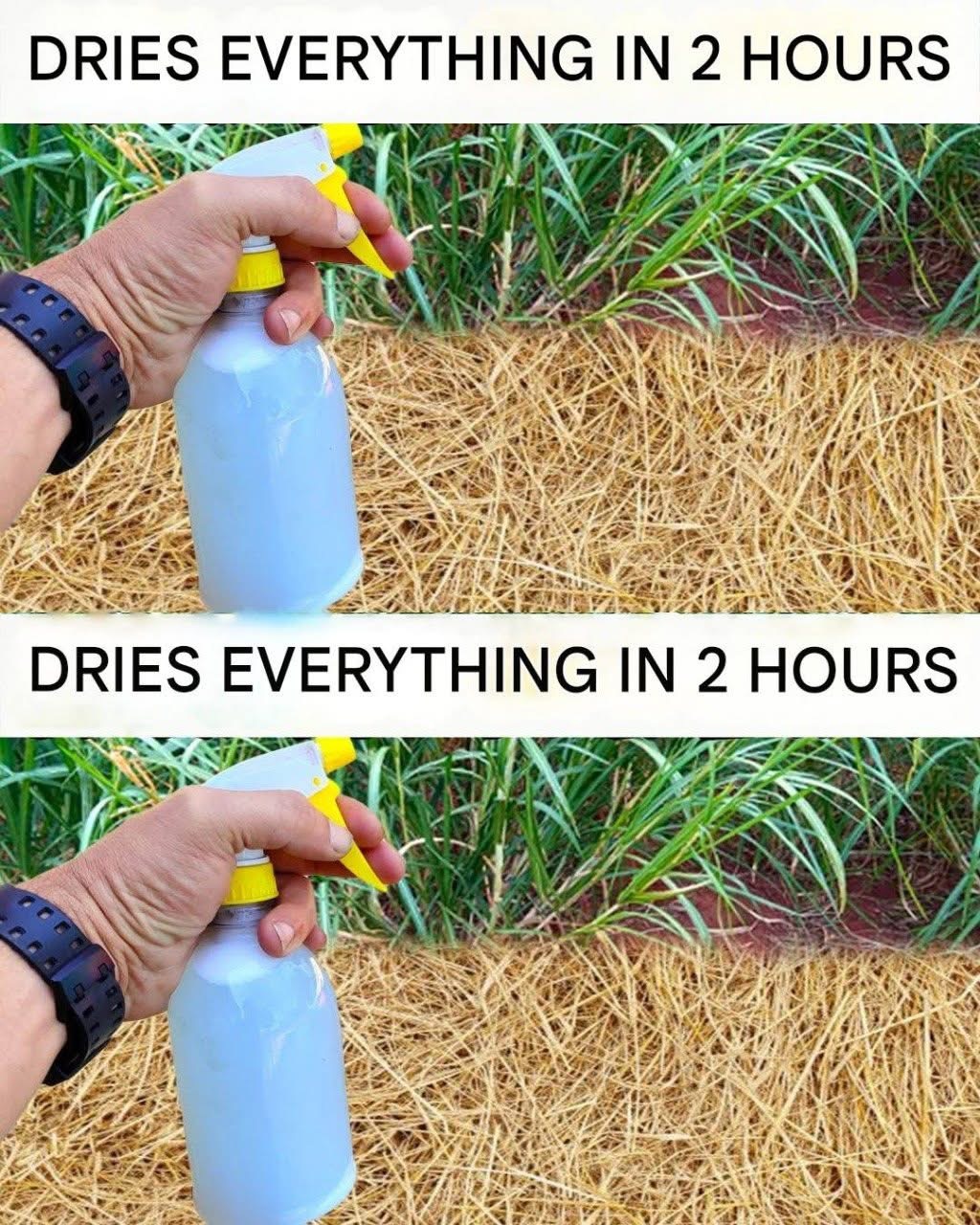Eliminate Weeds Naturally: DIY Homemade Herbicide Recipe
Tired of battling garden weeds or those pesky plants sprouting in cracks and crevices? Commercial herbicides can be costly, toxic, and harmful to the environment, but this homemade weed killer offers a safe, budget-friendly, and highly effective alternative. Using simple household ingredients, you can wipe out unwanted weeds without chemicals in just a few days. Below, we’ve refined the recipe, added practical tips, and included FAQs to make weed control a breeze.
Ingredients (Makes 500 ml)
- 500 ml water (tap or distilled)
- 1 tablespoon salt (table salt or sea salt)
- 1 tablespoon baking soda
- 5 tablespoons liquid dish detergent (any brand, preferably biodegradable)
To Scale Up: Double or triple the ingredients for larger areas (e.g., 1 liter = 1000 ml water, 2 tbsp salt, 2 tbsp baking soda, 10 tbsp dish detergent).
Instructions
Step 1: Prepare the Mixture
- Using a funnel, pour 500 ml of water into a clean container or directly into a spray bottle.
- Add 1 tablespoon of salt and 1 tablespoon of baking soda.
- Pour in 5 tablespoons of liquid dish detergent.
Step 2: Mix Well
- Stir the mixture thoroughly with a spoon or shake the spray bottle gently until the salt and baking soda are fully dissolved.
- If not already in a spray bottle, transfer the solution using a funnel.
Step 3: Apply the Herbicide
- Shake the spray bottle well before each use to ensure the ingredients are evenly mixed.
- On a hot, sunny day, spray the solution directly onto the leaves and stems of unwanted weeds, thoroughly soaking the foliage.
- Avoid spraying near desirable plants, as the solution is non-selective and will harm any vegetation it contacts.
Tips for Best Results
- Optimal Timing: Apply during the hottest part of the day (midday) when weeds are actively growing. Heat enhances the solution’s effectiveness.
- Weather Check: Avoid application if rain is forecast within 24 hours, as it can wash away the solution. Dry, sunny conditions are ideal.
- Target Small Weeds: This herbicide works best on young, small weeds. For larger or perennial weeds, multiple applications may be needed.
- Clean Equipment: Rinse the spray bottle thoroughly after use to prevent salt buildup, which can clog the nozzle.
- Eco-Friendly Soap: Use biodegradable dish detergent to minimize environmental impact.
- Spot Application: For weeds in tight spaces (e.g., pavement cracks), use a small paintbrush to apply the solution precisely.
- Post-Treatment: Once weeds are brown and dry (3–5 days), pull them out or sweep away debris for a tidy garden.
Frequently Asked Questions (FAQs)
1. How does this herbicide work?
The salt dehydrates the plant, baking soda disrupts its cellular function, and dish detergent helps the solution stick to leaves and penetrate the plant’s surface, ensuring quick wilting and death.
2. Is this herbicide safe for pets and kids?
Once dried, the solution is generally safe, but keep pets and children away from treated areas until the solution dries completely. Avoid using near edible plants, as salt can affect soil quality.
3. Will this harm my lawn or garden plants?
Yes, this is a non-selective herbicide, meaning it kills any plant it touches. Apply carefully, shielding desired plants with cardboard or plastic during spraying.
4. How long does it take to see results?
Wilting or color changes (yellowing, browning, or purpling) often start within hours. Most weeds are fully dry and dead within 3–5 days, depending on size and weather.
5. Can I use this on large or tough weeds?
It’s most effective on small, annual weeds. For larger or perennial weeds (e.g., dandelions), you may need repeated applications or manual removal after weakening the plant.
6. How long does the solution last?
The mixture can be stored in a sealed spray bottle for up to a month. Shake well before each use, as ingredients may settle.
7. Can I use vinegar instead of baking soda?
Yes, substituting baking soda with 1 cup of white vinegar can enhance the herbicide’s potency, but it may be harsher on soil. Test on a small area first.
8. Why are my weeds still alive after treatment?
Incomplete coverage, rain, or hardy weeds may reduce effectiveness. Reapply on a sunny day, ensuring thorough soaking, or manually remove stubborn weeds.
Why This Method Works
- Salt: Draws moisture from plant cells, causing dehydration.
- Baking Soda: Alters the plant’s pH and disrupts growth processes.
- Dish Detergent: Breaks down the plant’s waxy coating, allowing the salt and baking soda to penetrate effectively.
This combination is powerful yet gentle on the environment compared to synthetic herbicides, making it ideal for home gardens, patios, and walkways.
Cautions
- Non-Selective: This solution kills all plants it contacts, so use with precision near flowers, vegetables, or grass.
- Soil Impact: Repeated use in the same area can increase soil salinity, affecting future plant growth. Use sparingly in garden beds.
- Pavement Cracks: Safe for driveways or sidewalks, but avoid overuse near lawns or trees.
- Not for Edible Gardens: Avoid spraying near herbs, vegetables, or fruit plants, as salt may linger in soil.
Conclusion
With this homemade herbicide, you can tackle weeds quickly, safely, and affordably without relying on toxic chemicals. Perfect for gardens, patios, or pesky cracks, this easy-to-make solution delivers results in days while keeping your outdoor spaces eco-friendly. Try it on a sunny day, follow our tips, and enjoy a weed-free garden with minimal effort! 🌱

